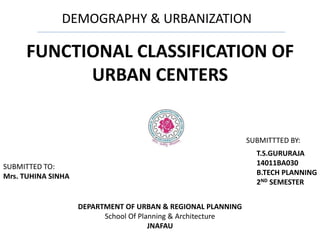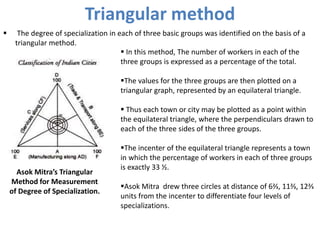The document discusses the functional classification of Indian cities as proposed by Asok Mitra. He grouped cities into seven categories - manufacturing, artisan, mining, plantation, trading, transport and services - based on the percentage of workers engaged in different economic sectors. Mitra further classified the cities based on their degree of specialization using a triangular method to plot each city on a graph. While the classification identified specialized city types, most Indian cities were found to have a diversified economic base with no clear single function.













